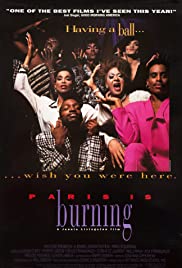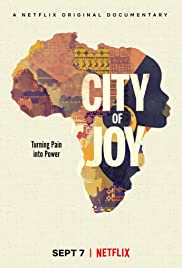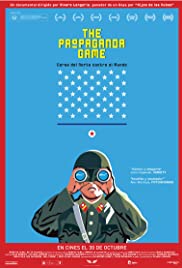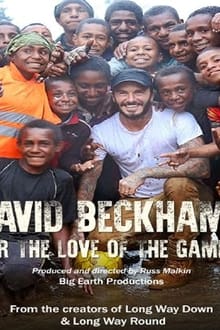
Not Available
You May Also Like

Where does voguing come from, and what, exactly, is throwing shade? This landmark documentary provides a vibrant snapshot of the 1980s through the eyes of New York City’s African American and Latinx Harlem drag-ball scene. Made over seven years, PARIS IS BURNING offers an intimate portrait of rival fashion “houses,” from fierce contests for trophies to house mothers offering sustenance in a world rampant with homophobia, transphobia, racism, AIDS, and poverty. Featuring legendary voguers, drag queens, and trans women — including Willi Ninja, Pepper LaBeija, Dorian Corey, and Venus Xtravaganza — PARIS IS BURNING brings it, celebrating the joy of movement, the force of eloquence, and the draw of community.

This film seeks to rescue the role of filmmaker Neville D’Almeida by using many rare images, numerous interviews, vast archival and audiovisual material.

The Democratic Republic of Congo has endured 20 years of devastating violence. Rape has been used as a weapon of war to destroy community and access precious minerals. Congo is often referred to as “the worst place in the world to be a woman.” CITY OF JOY tells a different story of the region. The film focuses on Jane, a student at a center where women who have suffered unimaginable abuse join together to become leaders. We also meet the founders of the center: a devout Congolese Doctor (Dr Denis Mukwege, 2016 Nobel Peace Prize nominee) a Congolese activist (Christine Schuler-Deschryver) and a radical N.Y. playwright (Eve Ensler, author of The Vagina Monologues). The film weaves between joy and pain as these individuals band together to demand hope in a place so often deemed hopeless.

North Korea. The last communist country in the world. Unknown, hermetic and fascinating. Formerly known as “The Hermit Kingdom” for its attempts to remain isolated, North Korea is one of the largest source of instability as regards world peace. It also has the most militarized border in the world, and the flow of impartial information, both going in and out, is practically non-existent. As the recent Sony-leaks has shown, it is the perfect setting for a propaganda war.

The story of four kids in Afghanistan whose lives changed dramatically after US troops completed their withdrawal and the Taliban swept to power

Les inconnus de la terre starts like a traditional feature film: in the beginning of the film all the leading roles are given a short introduction. This is followed by a number of interviews, in which the makers unashamedly appear themselves. They include an interview with a lonely shepherd and one with three unmarried brothers who try to run the parental farm for better or worse. Notwithstanding the fact that this mode of interviewing has now become classical, les inconnus de la terre works rather refreshingly. The film is more than just an enumeration of problems. In an honest way it shows the ties of those involved to the land and to nature, in addition to being a plea for the modernization of French agriculture.

Cameras follow David Beckham as he attempts to play a football match on all seven continents and get back in time for his own UNICEF fundraising match at Old Trafford. On the journey, he discovers what football means to the many different people he meets and plays with, as well as some of the universal truths about the game itself, including its ability to inspire and unite people.

On the shores of Jeju Island, a fierce group of South Korean divers fight to save their vanishing culture from looming threats.

Talib Shah Hossaini, a 37-year-old Afghan filmmaker and asylum-seeker, lives in Moria on the Greek island of Lesbos – the biggest refugee camp in Europe until it burnt to the ground in autumn 2020. One year into his life in the camp, Talib Shah finds himself on the verge of losing hope. Instead of giving up, however, he decides to shoot a film called Picnic − an insider’s look at the lives of thousands of refugees stuck in a place sometimes described as a humanitarian disaster. Exploring topics such as dreams versus reality, art as a means of survival, or the current immigration policies in Europe, the film invites us to become better acquainted with the people who will soon be our neighbours.

The Shannon is Ireland’s greatest geographical landmark and longest river. It is both a barrier and highway, a silver ribbon holding back the rugged landscapes of the west from the gentler plains to the east. On its journey south, the Shannon passes through a huge palette of rural landscapes, where on little-known backwaters, Ireland’s wild animals and plants still thrive as almost nowhere else. For a year, wildlife cameraman Colin Stafford-Johnson lives on the river, camping on its banks, exploring its countless tributaries in a traditional canoe, following the river from dawn to dusk through the four seasons, on a quest to film the natural history of the Shannon as it has never been seen or heard or experienced before.

Docu-drama about the earthquake in Romania, on March 4, 1977. The film was not broadcast in the country.

Based on Mallory Smith’s posthumously published memoir, Salt In My Soul offers a look inside the mind of a young woman trying to live while dying. Diagnosed with cystic fibrosis, Mallory turned to a secret diary to record her thoughts.